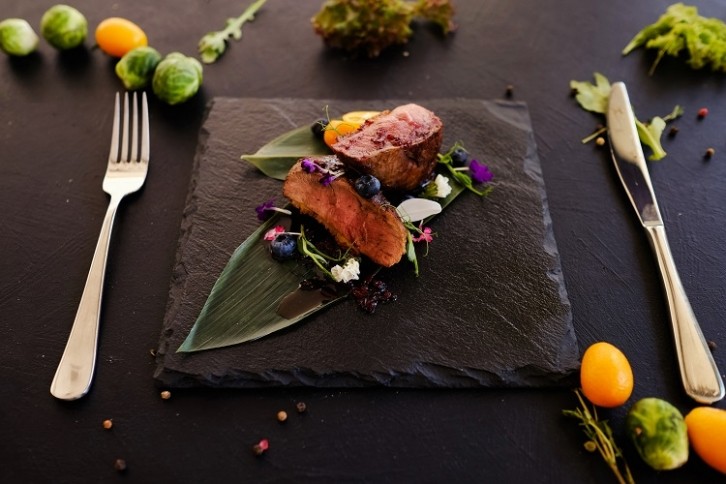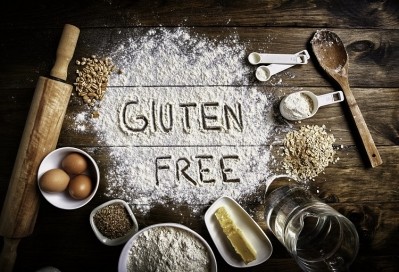Luxury food trend: How brands can benefit

The cost-of-living crisis had a powerful impact on consumer spending across Europe. However, the recent signs of recovery is leading to an increase in consumer spending.
“Europe's recovery, fuelled by domestic demand, is firmly on track,” said Alfred Kammer, director of the IMF European Department, during his May 2024 speech at the House of the Euro in Brussels. “The latest GDP data for the euro area show growth slightly above expectations, with all major economies performing slightly better than anticipated in our April 2024 Regional Economic Outlook.”
And this increase in spending is not just going to household essentials, but to luxury items too.
Why is the luxury food trend growing?
“People are spending more of their income on wellness, hospitality and dining nowadays,” said a spokesperson for food trend analyst, Taste Tomorrow.
And while consumers are beginning to spend more, as the cost-of-living crisis eases it appears that the luxury food trend has been emerging for some time and may, in fact, have been steadily growing through the economic crisis.
Why? Well, it appears that when times are tough, consumers find comfort in affordable indulgences.
“The luxury foods market has shown remarkable adaptability over the years, especially during economic downturns,” David Faulkner, food & drink director for market insight firm, Mintel, told FoodNavigator. “This isn't surprising, as consumers tend to seek small, affordable indulgences during these difficult periods and food and drink are perfect options.”
And this was particularly true during the global pandemic in 2020, when consumer options outside of the home were removed and many turned to online shopping to source groceries.
“As soon as COVID hit, and no one could go to shops or restaurants, we saw a bump in interest and sales,” Tom Rogers, sales and customer service manager for Fine Food Specialist, told FoodNavigator. “And we saw more people being interested in a wider range of foods. In terms of luxury foods, we saw an uptake compared to prior years, with people being a bit more inventive with their recipes and ingredients.”
Another major contributing factor to the growth in the luxury food trend is that consumers are favouring quality over quantity and are willing to pay more for that quality.

According to Mintel, the majority of European consumers believe it is worth paying more for products of a higher quality.
“The preference for premium products offering superior taste, unique experiences, and added convenience has progressively grown,” explains Mintel’s Faulkner. “Luxury products are about the overall experience and authenticity they offer, often providing consumers with a sense of escape and pleasure during challenging times. There's a noticeable shift of consumers towards buying luxury foods, influenced by factors such as taste, health benefits, convenience, ethical considerations, and the desire for unique experiences.”
Perhaps unsurprisingly, the appearance of status is also a reason for consumers to opt for luxury foods, with members of all age groups conforming.
“This trend cuts across demographics and is often as a result of consumers viewing such food items as a status symbol, indicative of their refined tastes,” explains Faulkner. “The younger generations, especially Gen Z, have effectively influenced the market with their new perspective of viewing food as a new form of luxury, often sharing their culinary experiences on social media platforms, further driving the popularity of these premium products.”
Special occasions are another reason for consumers to indulge in luxury items. This is especially true for those consumers who are unable to buy luxury products on a regular basis.
“While consumers are willing to spend on products promising an exceptional taste experience, health benefits, and ethical sourcing, there's a careful balance when it comes to saving,” says Faulkner. “Everyday staples often see a frugal approach, with premium versions only appearing in shopping carts on special occasions or when the quality differentiation is substantial.”

What luxury foods are consumers buying?
Artisanal and gourmet products, such as chocolates, breads, meats and cheeses, are becoming particularly popular with consumers, with the attraction of high-quality ingredients, unique flavours, and quality craftsmanship.
Consumers are also looking for new experiences when it comes to eating and drinking.
“Experiential luxury dining provides immersive experiences that are memorable and often shared among friends and family, creating lasting impressions,” says Faulkner.
Recognition also plays a major role in the purchasing of luxury products, with consumers favouring brands with a long-established history.
“Brands with a long history are often best placed to reassure consumers of quality,” adds Faulkner.
What the luxury food trend means for manufacturers
With many consumers ready and willing to pay more for luxury items, now is the perfect time for food manufacturers to develop high-end product ranges, to meet this demand.
It also appears that consumers are keen to embrace the luxury status of the products they buy, so brands may well want to highlight their high-end ranges through decadent marketing campaigns, and maybe even a rebrand to emphasise their lux status.





























